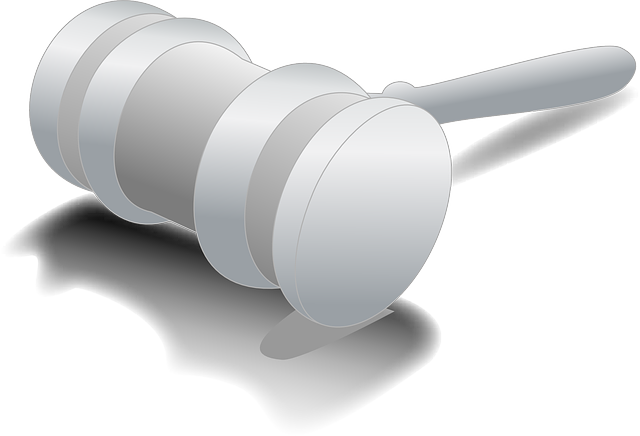Regulatory compliance is crucial in personal injury cases, focusing on calculating damages to secure justice. Lawyers navigate complexities by reviewing regulations, documenting medical records, and assessing expenses like medical bills, lost wages, and pain & suffering. Accurate calculations involve legal guidelines, expert witnesses, and adherence to economic or non-economic models, impacting settlement outcomes. Businesses also face regulatory risks; proactive strategies like audits, training, and trend tracking mitigate damages and prevent compliance gaps.
Navigating regulatory compliance in personal injury cases is a complex landscape that demands meticulous attention. This article serves as your guide through the intricate web of legal considerations, offering insights into understanding regulatory basics and identifying common issues. We explore strategies to mitigate risks, ensuring adherence to legal frameworks when calculating damages. By delving into these key aspects, we aim to equip professionals with the knowledge needed to navigate—and excel in—the regulatory compliance realm of personal injury cases.
- Understanding Regulatory Compliance Basics
- Common Compliance Issues in Personal Injury Cases
- Calculating Damages: Legal Frameworks and Considerations
- Strategies to Mitigate Compliance Risks and Avoid Damages
Understanding Regulatory Compliance Basics

Regulatory compliance involves adhering to laws, rules, and regulations that govern a respective business. For legal professionals, especially those handling personal injury cases, it’s crucial to understand these basics to ensure justice for their clients. In such cases, calculating damages is a critical component of achieving a complete dismissal of all charges or an equitable settlement. This process involves assessing the harm caused to the victim and quantifying it in monetary terms.
By thoroughly reviewing relevant regulations and legal precedents, lawyers can navigate complex compliance issues effectively. This includes understanding the specific requirements for documentation, evidence collection, and reporting to avoid any discrepancies that might lead to adverse outcomes. For instance, when dealing with personal injury claims, proper documentation of medical bills, lost wages, and pain and suffering can significantly impact the final damages awarded, potentially making the difference between a substantial settlement and a mere token amount.
Common Compliance Issues in Personal Injury Cases

Personal injury cases often present a unique set of regulatory compliance issues that can significantly impact outcomes. One of the primary challenges is accurately calculating damages, which involves a meticulous process of assessing medical expenses, lost wages, pain and suffering, and other tangible and intangible losses. This critical step requires adherence to legal guidelines and standards throughout all stages of the investigative and enforcement process.
Plaintiffs’ attorneys must navigate complex regulations to ensure they present compelling evidence that supports their calculations. This includes obtaining detailed medical records, employing expert witnesses for specialized assessments, and meticulously documenting every expense incurred as a result of the injury. Moreover, successful navigating these challenges can lead to winning challenging defense verdicts and achieving extraordinary results for victims who have suffered significant harm.
Calculating Damages: Legal Frameworks and Considerations

Calculating damages in personal injury cases is a complex process that varies significantly based on legal frameworks across jurisdictions. In many regions, the primary goal is to restore individuals to their pre-injury state, compensating them for medical expenses, lost wages, and pain and suffering. The former two categories are usually straightforward to quantify, while the latter involves more subjective assessments. Courts often consider factors like the severity of the injury, its long-term impact on daily life, and the psychological toll. This process is not merely numerical; it’s a delicate balancing act that accounts for human experiences and vulnerabilities within the respective business and philanthropic and political communities.
Legal systems employ various methods to determine damages, including economic models that analyze costs directly tied to the injury and non-economic models that attempt to monetize intangible aspects like quality of life, enjoyment of life, and emotional distress. The choice of model can significantly influence the outcome, reflecting the unique circumstances for each client. Legal professionals play a crucial role in navigating these complexities, ensuring their clients receive fair compensation commensurate with the extent of their injuries.
Strategies to Mitigate Compliance Risks and Avoid Damages

To mitigate compliance risks and avoid damages, especially in complex regulatory environments, businesses must adopt proactive strategies. This includes regular audits and assessments to identify potential gaps or non-compliance issues before they escalate. Implementing robust internal controls and training programs ensures that employees understand their roles and responsibilities in maintaining regulatory adherence. Additionally, staying informed about industry trends and legislative changes is crucial; subscribing to relevant newsletters and attending workshops can help keep businesses ahead of the curve.
Calculating damages in personal injury cases, for instance, requires meticulous documentation and expert analysis. Similarly, for a respective business navigating regulatory compliance issues, understanding the potential financial implications is vital. By fostering a culture of transparency and accountability within the philanthropic and political communities, organizations can avoid indictment and ensure long-term sustainability. Early intervention and continuous monitoring are key to preventing significant damages and maintaining the trust of stakeholders.
In navigating the complex landscape of regulatory compliance in personal injury cases, understanding basic principles, recognizing common issues, and leveraging effective strategies are paramount. By grasping the legal frameworks involved in calculating damages, professionals can mitigate risks and ensure fair outcomes. When adhering to these practices, the legal system fosters a tapestry of justice, where folks are compensated appropriately while avoiding unnecessary pitfalls. This comprehensive approach ensures that navigating regulatory compliance isn’t a labyrinthine enigma but a manageable process, ultimately revolutionizing how damages are determined in personal injury cases. Specifically, focusing on calculating damages in light of common compliance issues equips lawyers to deliver precise and just results, making it a game-changer in the legal realm.






